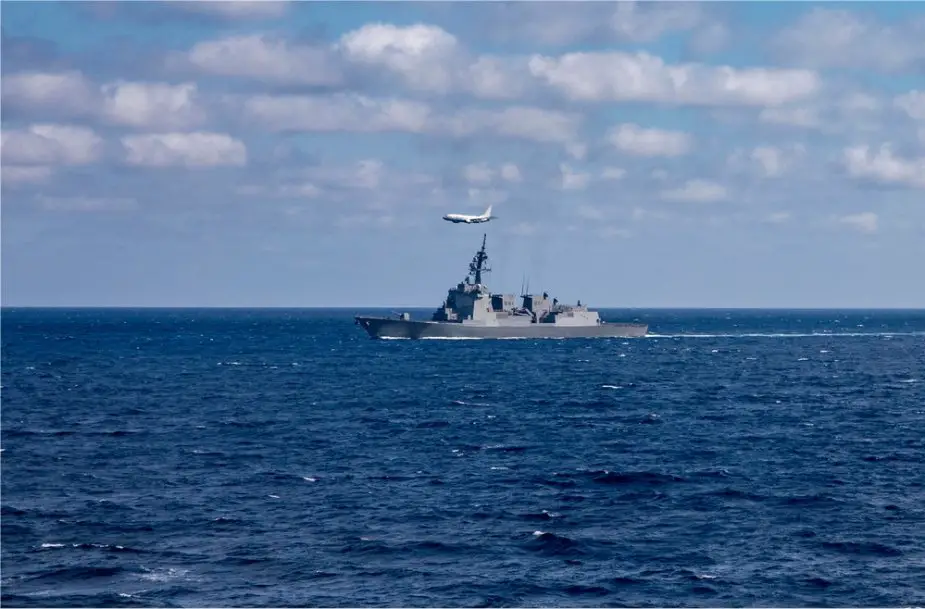Breaking news
Japan, US & South Korea conduct drills in response to North Korea.
According to information published by the US DoD on July 16, 2023, the United States, Japan, and the Republic of Korea recently carried out a joint ballistic missile defense exercise in response to the North Korean ICBM launch.
Follow Navy Recognition on Google News at this link
 A P-8 aircraft conducts a flyover above the Japanese Maya-class destroyer, JS Haguro. (Picture source: US Navy)
A P-8 aircraft conducts a flyover above the Japanese Maya-class destroyer, JS Haguro. (Picture source: US Navy)
This exercise serves as a proactive response to North Korea's missile development activities and aims to enhance regional security while deterring potential threats.
By conducting joint exercises, the three nations demonstrate their commitment to close collaboration in missile defense capabilities and coordination. This exercise showcases their efforts to improve the detection, tracking, and interception of ballistic missiles, thereby enhancing their collective defense posture.
North Korea's launch of the Hwasong-18 ICBM underscores the ongoing challenges posed by its missile program. The development of this technologically advanced missile, capable of delivering a nuclear warhead over long distances, signifies North Korea's progress in missile technology and its ambition to expand its strategic capabilities.
Technical data
The Hwasong-18 is an advanced intercontinental ballistic missile (ICBM) developed by North Korea. Representing a significant technological advancement for the country, it is the first solid-fueled ICBM in their arsenal.
The missile made its debut appearance during the commemorative parade held on February 8, 2023, celebrating the 75th anniversary of the founding of the Korean People's Army.
On April 13, 2023, the Hwasong-18 conducted its maiden flight, demonstrating its operational capabilities. This three-stage missile is propelled by a powerful solid fuel rocket motor, generating a thrust of approximately 140 tons. With an estimated mass of 55-60 tons and a length of around 25 meters, the Hwasong-18 showcases North Korea's progress in missile technology.
Equipped with a nuclear warhead, possibly capable of multiple independently targetable reentry vehicle (MIRV) deployment, the Hwasong-18 carries a warhead weighing between 1.25 to 1.5 tons. It possesses an operational range of roughly 15,000 kilometers, indicating its potential to reach distant targets.
During its flight, the Hwasong-18 achieved an impressive altitude of 6,648 kilometers, further emphasizing its capabilities. The missile is launched from a 9-axle Transporter Erector Launcher (TEL) platform, providing mobility and flexibility in deployment.























